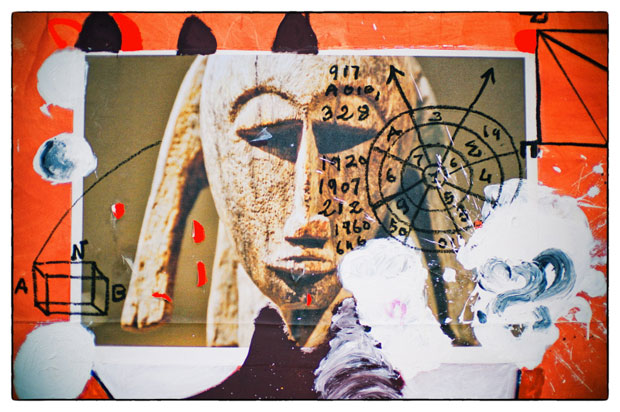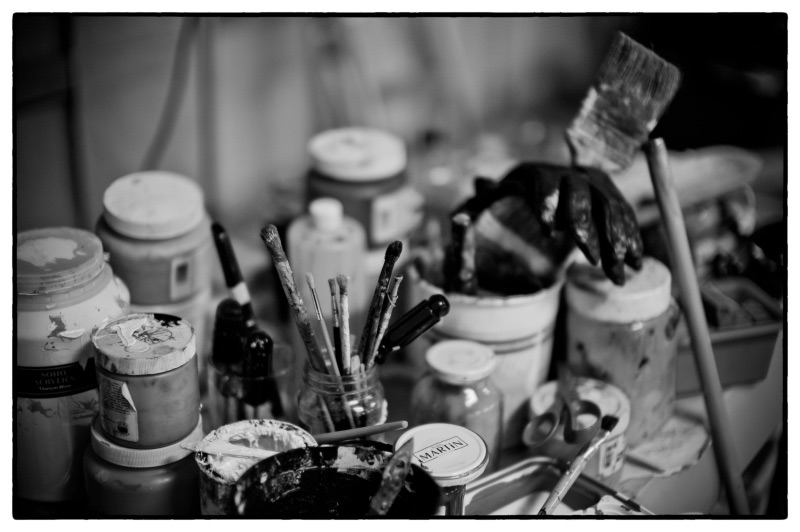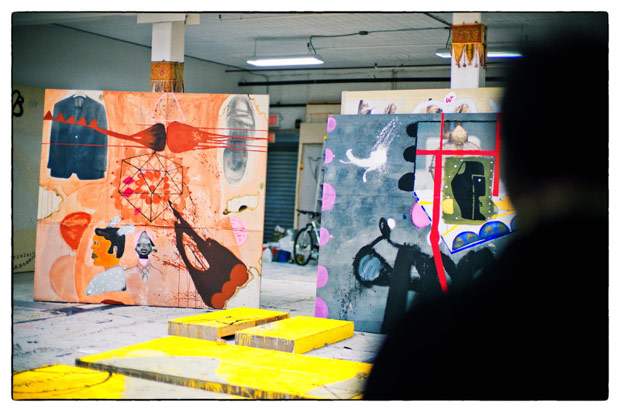Studio Visit: Ouattara Watts
The acclaimed artist offers us a rare glimpse inside his Brooklyn studio ahead of his upcoming mini retrospective

While we all like to tap into an artist’s brain, find out exactly what goes on in their mind to make them create what they do, sometimes there isn’t really more behind a work of art than simply a vision that a person is unable to explain through words. The different approaches to making art—from pragmatic to utterly emotional—is part of what keeps the field perpetually intriguing.

A reticent painter originally from Côte d’Ivoire, Ouattara Watts recently opened up his studio to Cool Hunting for a preview of the newly formed works comprising his forthcoming exhibition. The large, garage-like space is located in an industrial part of Brooklyn between Williamsburg and Bushwick that’s home to numerous emerging artists. With both the Whitney Museum and Venice biennials on his résumé, the veteran painter may hold more clout than his neighbors, but his artistic spirit seems unaffected by his widespread success.

Organized by Vladimir Restoin Roitfeld, Watts’ upcoming NYC exhibition—which Roitfeld says is more like a small retrospective—will feature 18 new paintings alongside a few existing pieces. Watts completed all of these large-scale works in a matter of about six months, explaining that with the way the world is right now, he has a lot to say. At the moment, he is mostly preoccupied by the population of mistreated children in the world, a concern that presumably evolved since the birth of his own child, a life-changing moment for him.

Bursting with color and layered in fabrics and objects picked up from his global travels, Watts’ paintings are still entrenched in his own style of Neo-Expressionism. Cryptic serial numbers abound, alluding to a secret code that only he knows about, but one that could potentially be worked out through clever deciphering or a deep understanding of West African cosmology. The mysticism that prevails reflects a coalescent spirituality, his beliefs not tied to one religion or another, but that together are very much a part of his enduring creative passion.

The mix of media Watts uses is also symbolic of his constant exploration, and the people he encounters along the way. For example, the massive piece, “Vertigo #4” is covered in a denim remnant given to him by the shop owner of a fabric store near his Midtown apartment. Glued to this is an Ikea-like dish cloth embroidered with the initials “JL”—who they belong to Watts claims not to know. These found objects and recycled fabrics likely speak to the movement against using expensive materials, a notion developed in the 1970s by fellow Ivorian painter Mathilde Moraeau which she called Vohou-Vohou. The mix also undoubtedly marks a more natural way for Watts to express himself, free of monetary limitations or a prescribed aesthetic.

Although known in his own right, it’s difficult not to associate Watts with the legendary artist Jean-Michael Basquiat. The two met in Paris while Watts was studying at the renowned L’École Nationale Supérieure des Beaux-Arts, and while their friendship was short-lived due to Basquiat’s death, Watts considers him almost like a soulmate. Basquiat convinced him to move to NYC, where Watts gave rise to African art with prominent shows at the Gagosian and Vrej Baghoomian galleries.

The exhibition opens 7 February and runs through 19 February 2012 at the cavernous space known simply as 560 Washington Street.
All images by Image Agency, see more in the slideshow below.

























